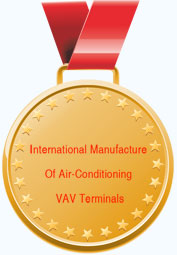AHRI Supports Provision in DOE Rule Establishing Regional Energy Efficiency Standards for Furnaces, Air Conditioners, and Heat Pumps
【2011-6-14】
AHRI expresses "Strong Reservations" about stand-by power limits in rule.
Arlington, Va (June 10, 2011) — The Air-Conditioning, Heating, and Refrigeration Institute (AHRI) today praised part of the Direct Final Rule released by the U.S. Department of Energy (DOE) establishing the first-ever regional standards for central air conditioners and furnaces, as well as strengthened national standards for heat pumps. The new rules are based on a joint recommendation filed with DOE by AHRI and several energy efficiency advocacy groups in 2009.
"The agreement on which the new DOE rule is based is another great example of industry and advocacy groups collaborating to save energy and improve the environment, said Stephen Yurek, President and CEO of the Air-Conditioning, Heating, and Refrigeration Institute (AHRI), one of the organizations that negotiated the agreement. "It represents a major step forward in the nation's drive to increase energy efficiency. It will save energy and will provide industry with greater certainty in the marketplace, which enables more investment, enhances global competitiveness, and preserves jobs," he said.
Yurek expressed strong reservations, however, about the rule's limits on stand-by power for the products covered by the rule. "The stand-by power limits listed in the rule are a cause of great concern to our members," Yurek said. "We will be consulting with them in the days to come and will decide an appropriate course of action. We are disappointed that DOE included the provisions on stand-by power in this direct final rule," he said.
Once the standards in this rule are implemented, a typical new air conditioner in the South will use about 40 percent less energy, and a typical new furnace in the North will use about 20 percent less than one sold before national standards were established in the late 1980s. According to DOE, the updated air conditioner and heat pump standards announced today will save enough electricity over thirty years to meet the total energy needs of 8.7 million typical American homes for a year. The new furnace standards will save about 31 billion therms over 32 years, or enough natural gas over the same period to heat 62 million typical American homes. (One therm is equal to 96.7 cubic feet of natural gas). The new standards will save U.S. consumers more than $13 billion between their effective dates and 2030.
Bipartisan legislation passed by the Senate Energy and Natural Resources Committee earlier this year also included standards based on the groups' 2009 agreement. However, even with DOE's announcement, a bill will still be needed because an additional key provision of the agreement can only be done via legislation. It would allowstates to include even higher minimum efficiency levels for heating and cooling systems in their building codes for new construction. The Senate bill also includes standards for several other AHRI products based on similar consensus agreements.
The signatories to the joint agreement on which today's standards are based are: AHRI, the American Council for an Energy-Efficient Economy (ACEEE), the Alliance to Save Energy, the Appliance Standards Awareness Project (ASAP), the California Energy Commission (CEC), the Natural Resources Defense Council (NRDC), other advocacy groups, and more than a dozen individual furnace, heat pump, and air conditioner manufacturers.


















